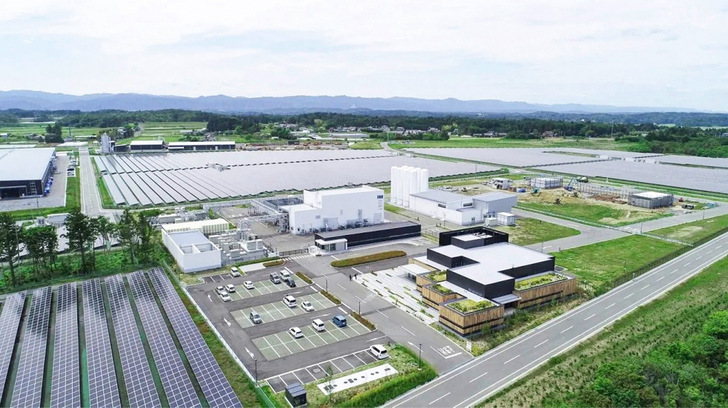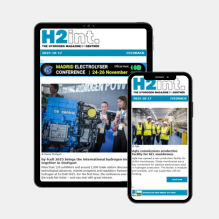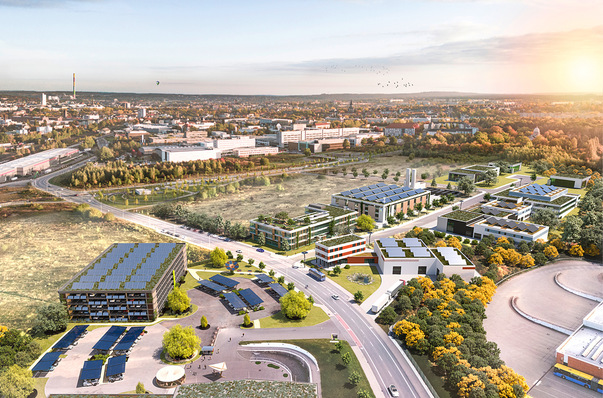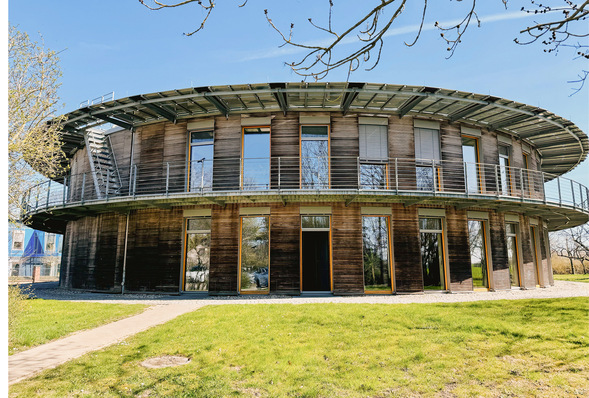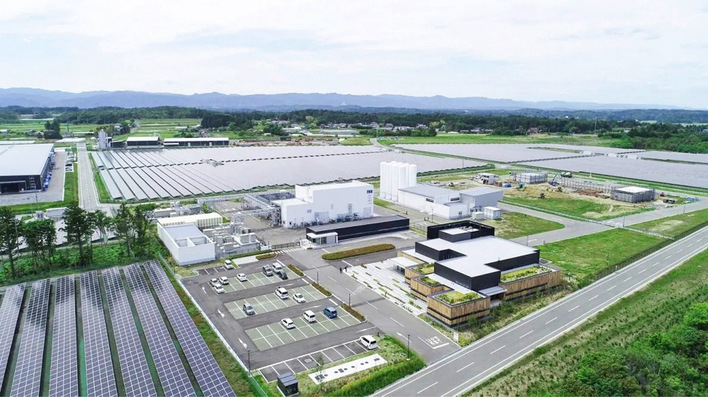The Fukushima Hydrogen Research Field (FH2R) produces up to 900 tonnes of hydrogen per year using a 10 MW electrolysis plant – enough to refuel 10,000 fuel cell vehicles. For the city, this marks the first step toward becoming a regional hub for the hydrogen economy. A German delegation from the German Japanese Energy Transition Council (GJETC) and the Federal Ministry for Economic Affairs and Climate Action (BMWK) recently visited the facility.
The city of Namie was severely affected by the triple disaster in 2011, which, among other things, led to the reactor failure in Fukushima, and was almost completely evacuated in the aftermath. Today, only around 2,200 people live there – a fraction of the former population. Now, nearly 15 years after the disaster, Namie is positioning itself as an innovation center for hydrogen technology through the FH2R project. The project is part of a comprehensive strategy aimed at building a new image for the Fukushima region as a location for green energy technologies.
The FH2R project is fully funded by the state-run New Energy and Industrial Technology Development Organization (NEDO) and is a key component of Japan’s broader hydrogen strategy. Project planning for FH2R began in September 2016, construction started in August 2018, and the facility was completed in March 2020. The ongoing projects at FH2R are financed through NEDO’s Green Innovation Fund.
From disaster to innovation center
The research field, located directly on the coast, covers an area of 40,000 m2 for the main production facility, supplemented by a 180,000 m2 solar power plant. FH2R uses an alkaline electrolyzer from Asahi Kasei with a capacity of 10 MW – the largest of its kind in Japan. The facility can produce up to 1,200 Nm3 of hydrogen per hour (approximately 180 kg/h). For comparison: a Toyota Mirai fuel cell vehicle refuels with about 5 kg of hydrogen and can travel 500–600 km on it. The plant’s production would be sufficient to supply energy to 150 households per day or to refuel 560 fuel cell vehicles. The electricity for electrolysis is partly supplied by the on-site 20 MW solar power plant, which is to be expanded to 50 MW in the future. In addition, electricity is drawn from the grid, with an intelligent energy management system optimizing hydrogen production while stabilizing the power grid.
In addition to hydrogen production, FH2R also serves as a research platform. The adjacent Fukushima H2 Refueling Technology Center (FTC) develops standards and protocols for hydrogen refueling, particularly for heavy-duty vehicles. Work is underway on refueling a tanker truck with 80 kg of hydrogen in just 10 minutes – about five times faster than a conventional passenger car fuel cell. The center tests various nozzle types at 700 megapascals of pressure and in a temperature range from –10 to +40 °C. This research is crucial for the development of international standards for hydrogen refueling stations.
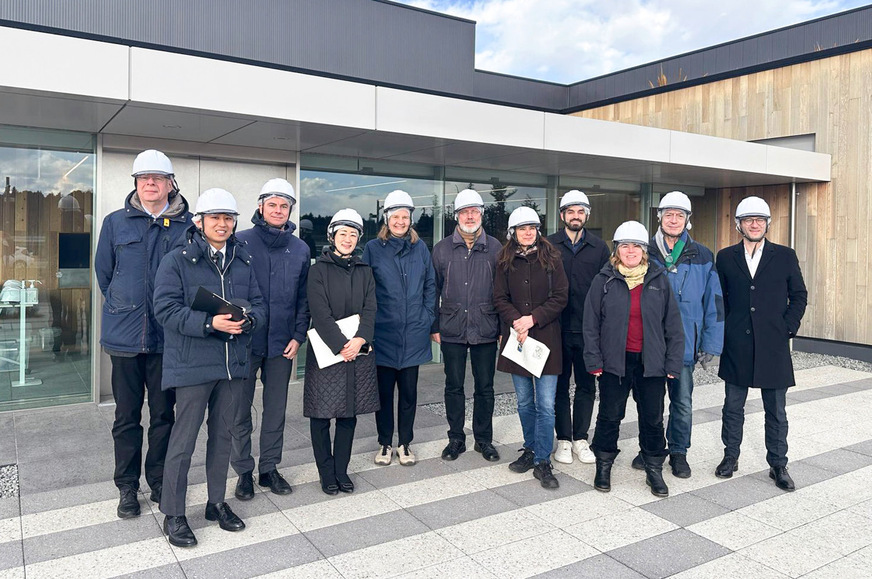
© GJETC
Local project with supraregional impact
The hydrogen produced at FH2R is provided free of charge to the municipality of Namie, provided it is used for public purposes. Namie has taken initial steps toward developing a “Hydrogen Valley” and has implemented various local applications. For example, at the newly built rest area “Michinoeki,” a 3.5 kW fuel cell (H2Rex from Toshiba) supplies electricity for lighting, ventilation, and hot water. Currently, the hydrogen is delivered by truck. In the future, however, overhead hydrogen pipelines are expected to offer a cost-effective alternative to conventional transport methods. This technology is being developed in collaboration with Brother, Yokohama National University, and the company Tomoe. This will result in an affordable hydrogen transport infrastructure that is technically, legally, and economically validated.
Hydrogen mobility also plays an important role in Namie. More than 80 fuel cell vehicles are in operation in Namie – one of the highest densities worldwide. To bring hydrogen applications as close as possible to the citizens, Namie Town has also developed an “FC Moving Stall.” This is the world’s first mobile sales stand, specifically a converted Toyota delivery van powered by fuel cell technology. To promote adoption, the city subsidizes the purchase of fuel cell vehicles with up to 1 million yen (approximately €6,700).
The hydrogen from the research field is also used beyond the city limits. Hydrogen refueling stations and stationary fuel cells throughout Fukushima Prefecture are supplied with green hydrogen from Namie. For example, since July 2020, the Azuma Sports Park in the city of Fukushima has been using stationary fuel cells (H2Rex from Toshiba) powered by green hydrogen from the FH2R project. The park was also one of the venues for the 2021 Olympic Games, which brought additional attention to hydrogen technology.
Approaches to bilateral cooperation
International cooperation, especially in research, is an important component of the FH2R project, as highlighted by the visit of the joint delegation from GJETC and BMWK. The GJETC has previously published studies on hydrogen, including its use as a tool for decarbonizing industry. The delegation consisted of leading German energy experts who are members of the GJETC, and representatives of the German Federal Ministry for Economic Affairs and Climate Action (BMWK), including Christian Maaß, Head of the Department for Heat, Hydrogen and Efficiency, and Dr. Christine Falken-Grosser, Head of the Division for Hydrogen Strategy and Coordination. “The activities to build research capacity and local use of green hydrogen are impressive,” said Dr. Christine Falken-Grosser after the visit. “Japan and Germany, both leaders in the development of hydrogen technologies, can benefit from mutual exchange on technologies, standards, funding instruments, and certification,” added Dr. Stefan Thomas, Co-Chair of the German-Japanese Energy Transition Council (GJETC).
The FH2R project is intended to demonstrate how green hydrogen can be produced and applied on a large scale, how renewable energy can be better integrated into existing power grids through flexible hydrogen production, and how economic recovery can be combined with climate protection and technological innovation. The experiences from Namie could be particularly valuable for regions facing similar challenges: structural change away from fossil fuels, integration of renewable energy into existing grids, and the development of new economic prospects for areas affected by climate change or other crises.


